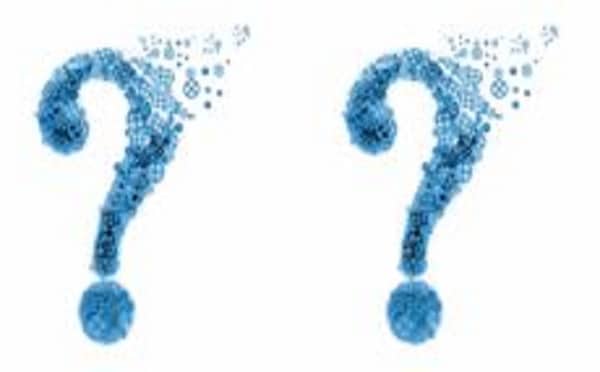
Phil Hearn: Blogger, Writer & Founder of MRDC Software Ltd.
What’s the best crosstab software for me?
When choosing the right crosstab software, there are an enormous number of choices. Do you choose Quantum, MRDCL, Merlin, mTAB, Wincross, QPSMR, Snap, SPSS or one of 100 or more other solutions? There are even products like Microsoft Excel that can produce crosstabs. The answer will probably lie in one or more of the four key considerations:
- The volume and complexity of the tables you want to produce
- The skills of the staff using the software
- The features you need to have available in the product you choose
- How well the software fits with your current processes
What type of software do I want?
Before answering these four questions, the first thing to consider is the type of software you want. You may have a preference, but it is essential to understand the differences in each type of software. The software used for crosstabs splits into two broad categories – software mostly driven by scripting and software using a graphical user interface (GUI) and/or a menu-driven system. Some products fit into the ‘hybrid’ category, typically having a GUI/menu-driven interface but having some extended capability using a scripting language.
What is scripted tabulation software?
Scripted tabulation software means tables are produced by entering code, usually via an editor, which must be specified using a syntax the program can read or interpret. The program may have some menus to execute runs or to export data, but the tables are derived entirely or principally from a script. Such software requires users to understand the language sufficiently to produce the tables they need, but it will usually contain features to provide shortcuts. Examples of scripted tabulation software are MRDCL, Quantum and Merlin. There are relatively few software packages of this type.
What is GUI/menu-driven tabulation software?
GUI/menu-driven software requires the user to make menu selections or an interface to specify tables. A keyboard would be used to enter text (such as question texts), but there would be few or no ‘commands’ which carry out functions. Such software usually requires much less training and, if well-designed, should be intuitive for most tasks. Such systems may lack features and tend to be less complete in terms of features than scripted tabulation software. Repetitive or complex tasks are more likely to be laborious or impossible. Examples of GUI/menu-driven tabulation software are QPSMR, SurveySystem, mTab, Snap, Wincross, and many more.
What is a hybrid tabulation software?
Hybrid tabulation software usually has a GUI/menu-driven way of using the software that most users will probably use, but there will be some extended features so that a scripting language can be used. SPSS is a good example of this. Although it is, in my opinion, not a good tool for producing crosstabs, it does give access to a scripting language. Even Microsoft Excel can produce crosstabs and offers more power if Visual Basic for Applications (VBA) is used. These programs, though, tend to have limitations. Even though there may be faster ways of doing things using script, the functionality may be limited – in the case of Microsoft Excel, it is very limited compared to MRDCL and, indeed, most market research-oriented software products. QPSMR, a menu-driven system, does have some limited access to extended facilities. However, QPSMR can drive out MRDCL script for users who want more power and functionality.
Which of the four key questions is most important?
So, let’s return to the four key questions cited at the beginning of this article. It’s unlikely that none of these considerations are important to you. Which ones are most important will depend on your goals. Let’s look at each in turn.
The volume and complexity of crosstabs you want to produce
Some people producing crosstabs will want to generate large volumes of tables, which may be simple or complex; others may wish to browse their data, create one or two tables at a time, and then drill down by using filters to explore the data more deeply. Market research questionnaires often have many questions, which can mean a large volume of tables is required. Some projects may have thousands or millions of records but few questions or fields. In the latter case, having an interactive tool to browse data will be of greater benefit. A scripting tool will likely reduce production costs if you produce large volumes of tables for many projects. Any runs producing over 50-100 tables may be considered large volumes. Similarly, scripting languages will usually serve you better when handling complex analysis, hierarchical data or tracking studies.
The skills of the staff using the software
Scripting languages and the scripts within hybrid systems need trained staff. Not only do such staff need to be trained, they need to be regular users spending a reasonable proportion of their time using the software. GUI/menu-driven systems are better for occasional users, less specialist staff and relatively straightforward projects. To become highly skilled and make the most benefit of advanced scripting languages like MRDCL will take some time to achieve. However, it can mean that projects such as tracking studies can be completed in a fraction of the time that you would need to achieve using a GUI/menu-driven system.
The features you need to have available in the product you choose
This sounds obvious, but it’s easy to overlook detailed considerations. The more advanced systems, such as MRDCL, will allow you to produce, more or less, any crosstab you might want. You could even build your own functions to calculate your own type of analysis if you wish. However, the functionality of some of the menu-driven systems will vary from highly featured to poorly featured. It’s best to build a checklist of everything you might want so you can check the features are available in the software you are considering. It is not the right tool if you need significance tests and the software can’t produce them! To reflect the level of depth you have to consider, here are some examples of features you may want:
- Statistical tests – mean, standard deviation, standard error, median etc.
- Two levels of significance tests active on a table
- Percentages vertically and/or horizontally with as many decimal places as needed
- Availability of tables in Excel format
- Ability to export data to Triple-S and SPSS
- As many banner points as you may need
- Easy top two/bottom box analysis
- Ability to build variables for more complex analysis
- Tools for requirements, such as summary tables from rating scales
- And much more!
Ideally, you should build a list like this to check that everything you need is available. Having a list of 100 things would not be unreasonable. MRDCL will likely have every feature you need for crosstabs. It’s worth noting that multivariate analysis is usually only available in specialist multivariate statistical products like SPSS.
How well the software fits with your current processes
If you just want your crosstab software to produce crosstabs, then you are fine. However, you may wish to consider how it fits into your other processes? Some of the things you might consider are:
- Does the crosstab software need to be able to enter or edit data?
- Can it read the data (easily) from my data collection software or other systems you use?
- Can I get the results in the table out in charting software? Or can it produce charts?
- Can I provide data in the form the client demands? For example, in SPSS format or as a Triple-S format
- Is it easy to manage a tracking study where there are questionnaire versions?
- If the software turns out to be the wrong choice, can I easily get the projects into another system, or am I trapped?
These sorts of questions are essential and should shape your decision. In my opinion, software providers should be willing to provide clear answers to all these questions. If they don’t, you should be suspicious.
One more consideration
One further consideration that may be important is the direction the software supplier is heading. The market research world is changing quickly and undoubtedly will continue to change. Frankly, I am surprised that some software companies are making few improvements or developments to their software – or even updating their website for years! At MRDC Software, we constantly look at ways to improve things and focus on changing market demands. Our roadmap has several exciting developments in the pipeline, including PowerPoint automation and connecting with TSAPI, the industry standard API for survey data. Recently, we have added new automation tools, smart data connectivity and many more new features. In a word, MRDCL, our crosstab software platform, is keeping up to date with market demands.
What’s the decision?
If you are choosing crosstab software, only you can make the right decision. However, I hope this guide gives you some ideas about the crucial things you should consider. Whilst I passionately believe that MRDCL is the best crosstab software in the world, it is not the right solution for everyone. As a vendor of three tabulation systems, I feel the right choice varies from customer to customer. Our pledge is that we will try to provide the right solution for you.







